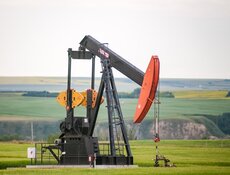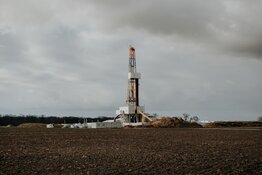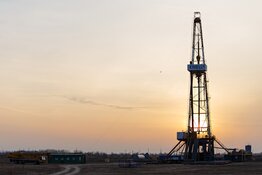Kirk Wilson: I focus on high-growth, undervalued junior and intermediate O&G names—domestically and internationally. The majority of the companies I follow are based in Canada, but all companies that I follow are listed in Canada. They typically have a market cap range from $25 million to $2 billion.
TER: What issues or trends are driving Canadian E&P companies?
KW: There are a couple of trends and issues that investors need to be wary of when looking at Canadian names. One is the ability to secure land on a reasonable basis. Junior and intermediate companies need to get into plays early to get a large enough land position before prices increase dramatically. We've seen it happen in all the main oil resource plays; if a company is not in early with a low-cost basis on land acquisitions, it gets more difficult to be able to put together a meaningful land position.
The economics are another issue. With about 75% of the Western Canadian Sedimentary Basin being natural gas-charged, finding oil plays that deliver much higher netbacks is getting more difficult. There just aren't as many of them out there. Most juniors have been weighted towards natural gas. However, with the challenge in gas prices, it makes growth very difficult for companies that are focused on that commodity because companies don't have the cash flow to reinvest. The economics of plays are very important as well, as investors must recognize the capital that is required to participate in some of these oil-resource plays.
TER: One trend that has been under the radar until recently is the light oil play in the Alberta Basin Bakken that extends from Montana into Alberta and Saskatchewan. What's going on there?
KW: The industry is trying to find new places to exploit large oil resources. The Bakken in Saskatchewan, and even into North Dakota, has existed for decades, but it was not economically producible. Horizontal drilling, multi-frack applications and higher oil prices have made the Bakken a very economic play.
Companies have applied that technology to other known resources, such as the Cardium play at Pembina, the Viking Formation, and the Shaunavon formation in southwest Saskatchewan. Using that technology, the industry is trying to find new exploration plays. The Alberta Bakken, which stretches from Alberta into Montana, is one of these new exploration plays. I categorize it as exploration because there's been a minimal amount of drilling, so a minimal amount of data. It's still very early days.
There are a lot of analogies and similarities between the Alberta Bakken and the Williston Basin that allow companies to put it on their radar screen. It's about 4,500 to 6,000 feet deep in Alberta and into Montana. It's light oil believed to be 35 to 42 degree American Petroleum Institute (API).
The Alberta Bakken is a good term but it can involve other formations like the Exshaw, Three Forks and Torquay. It may not be precisely in the Bakken, but it's in the same geologic age. Oil prices are now pretty consistently above $65; so, with proven technology and the ability to gain a meaningful land position, companies are now exploring and making this a new play that hasn't really been talked about in the past.
TER: Tell us a little bit more about the drilling economics of heavy oil versus light oil.
KW: A key consideration when comparing heavy oil and light oil is the viscosity. Light oil flows more easily than heavy oil, which means production rates are generally higher. That obviously helps the economics because there is a larger percentage of oil produced early in the life cycle of the well.
Then there are the light oil/heavy oil differentials. A company will receive—and this is a moving figure based on many variables—$10 to $15 per barrel less for heavy oil than for light oil.
Investors should also consider royalty rates. In Saskatchewan and Alberta, there are advantageous royalty rates compared to south of the U.S. border. That advantage comes from royalty incentives and royalty holidays. For instance, companies operating in the Blackfeet Nation in Montana pay ~30% royalties across the board. In Saskatchewan, the first 37,500 barrels incur 2.5% royalties if they're drilled on Crown land. In Alberta, 5% royalties are paid for 50,000 to 60,000 barrels of initial production.
TER: That's a remarkable difference.
KW: It really can be huge. Drilling and completion costs to get a well on-stream in the Viewfield area of Saskatchewan, where it's a little shallower, could be $1.7 million. The deeper plays down in North Dakota could be as high as $6.5 million per well. Alberta and Montana generally cost around $4 million per well.
The amount of developed infrastructure in those regions also plays into the economics of a play. The more developed infrastructure, as in Saskatchewan, the lower the full-cycle costs. Some areas have no infrastructure at all.
TER: The cost of doing business is lower in Saskatchewan and Alberta than North Dakota and Montana?
KW: Yes, but one must consider that production rates in North Dakota are sometimes multiples of those in Saskatchewan. While the costs are higher, the overall net-present values can also be higher in North Dakota depending on how much oil is going to be recovered and how quickly it is going to be recovered.
There are offsetting measures, but I would say Saskatchewan is probably the most developed, with North Dakota pretty close behind.
TER: What are some companies with exposure to the Bakken in Montana, Alberta and Saskatchewan?
KW: In North Dakota, there is Arsenal Energy Inc. (TSX:AEI), NuLoch Resources Inc. (TSX.V:NLR) and TriOil Resources Ltd. (TSX.V:TOL).
In Montana, there is Primary Petroleum (TSX.V:PIE), Rosetta Resources Inc. (NASDAQ:ROSE), Newfield Exploration Company (NYSE:NFX) and Anschutz Exploration Corp.
In Alberta, companies targeting the Alberta Basin Bakken include Crescent Point Energy Corp. (TSX:CPG), which has perhaps the largest land position. There is also Murphy Oil Corp. (NYSE:MUR), Royal Dutch Shell Plc (NYSE:RDS.A) and PetroBakken Energy Ltd. (TSX:PBN). On the smaller side, DeeThree Exploration Ltd. (TSX.V:DTX), Bowood Energy Inc. (TSX:BWD) and Argosy Energy Inc. (TSX:GSY) are three juniors that are playing that space.
TER: That's quite a list.
KW: In Saskatchewan, that list can be longer. Crescent Point and Petrobakken are the two big dogs there. In addition, there's Legacy Oil & Gas Inc. (TSX:LEG); Spartan Exploration Ltd. (TSX:SPE) has a big land position for its size; and Painted Pony Petroleum Ltd. (TSX.V:PPY.A) is active in the area. Then there are the trusts: ARC Energy Trust (TSX:AET.UN), NAL Oil & Gas Trust (TSX:NAE) and Advantage Oil and Gas Ltd. (NYSE:AAV; TSX:AAV).
TER: Could you delve a little deeper into some of those companies?
KW: Primary Petroleum has 190,000 net acres in Montana on two land blocks. Its western Montana land position is 170,000 acres and eastern Montana is 20,000 acres. And the company is still adding land. The company certainly has a very interesting and highly appealing land base perspective for those formations.
Right now, investors are watching offsetting activity by some larger companies. Just north of Primary, on the Blackfeet Nation, wells are being drilled by Rosetta, Newfield and Anschutz. Rosetta has drilled a number of wells already, and plans to get to eight wells this year. Obviously, drilling will continue into the New Year. Newfield also planned for an eight-well program this year. At least one of those wells is horizontal and is producing right now, which is a very interesting data point.
Data is being very closely held, but we do have verbal confirmation from Rosetta that the formation is over-pressured and oil-saturated. The company estimates that there are 13–15 million barrels of oil in place per section. To put that into context, in the Viewfield area of Saskatchewan, which is shallower and not as highly pressured, there are generally 4–5 million barrels of oil in place per section. So, the Alberta Bakken could contain up to triple the amount of oil in place. The key will be recovery and production rates. However, we've seen a lot of encouraging data so far.
Alberta is a little farther away from Primary Petroleum's lands, but some drilling has taken place and there are a couple of wells producing just across the border.
Primary's stock was recently trading in the $0.65 range. A risk evaluation of their resource indicates a $5 potential value. We don't have a lot of hard data and there are a lot of assumptions being made in that analysis, but if the play turns out to be analogous to the Saskatchewan play, there is a case to be made for at least $5 per share potential value for Primary.
TER: Acquiring land can be an issue. Primary's management must have gotten in on this pretty early to purchase 170,000 continuous acres in western Montana.
KW: It's a large land position, which is a notable achievement for Primary as it can be very difficult to put together this size of land base—it can take several years sometimes.
TER: What are some other companies?
KW: North of the border, DeeThree Exploration signed a joint venture with Encana Corporation (TSX:ECA; NYSE:ECA) for shallow gas several years ago. By good fortune they have a land base in southern Alberta, east of Lethbridge. DeeThree estimates at least 100 of its sections will be prospective for the Alberta Basin Bakken. In fact, any day now, the company is going to start drilling its first Bakken well. It's planning to drill two this year and follow up with at least four in the first quarter of next year. The company is in very close proximity to a couple of wells that have been drilled by other industry participants, such as Crescent Point. DeeThree has potential value of $2.90 per share if only one of every 10 sections are prospective for Alberta Basin Bakken. If they have 100 sections that are prospective, it could be nearly $30 per share of potential value for the company. That is a large upside for DeeThree. It needs to prove the play exists on its land, as does every company that's associated with the Alberta Basin Bakken.
TER: They need to create some faith. Some companies are shifting from gas to oil exploration. Where are they finding exploration success?
KW: The names that we follow are not necessarily shifting. Those companies had a predetermined goal to be involved in oil resource plays.
However, where some of the shifting is occurring is into the halo of the Pembina Cardium Formation where many junior companies are active. Names that we cover in that area include Daylight Energy Ltd. (TSX:DAY), Crew Energy Inc. (TSX:CR), Spartan Exploration and TriOil Resources.
To a certain extent, this is also occurring in the Bakken outside of Viewfield in southeast Saskatchewan. The companies we follow there are Spartan Exploration, TriOil Resources and Arsenal and NuLoch Resources down south in North Dakota. There are some companies that are chasing the Pekisko Formation, but it's not as widespread. Crew Energy in southern Alberta and Second Wave Petroleum Inc. (TSX.V:SCS) at Judy Creek are notable names.
Novus Energy Inc. (TSX.V:NVS) is a name we follow that's playing the Viking Formation in Saskatchewan.
TER: Novus is drilling in the Viking and the wells are coming on pretty strong?
KW: The company has drilled and has production history on at least 16 horizontal wells. There is a good statistical history of what to expect from a Viking well, between Novus and other industry players like Penn West Energy Trust (NYSE:PWE). Penn West is the big dog in the Viking play.
That information allows investors to take a fairly confident statistical view of what a company is going to get in the Viking. To be successful, to grow and to show value, a company needs a fairly large land base. Novus has definitely been a consolidator of land. The company has taken its land base from around 20 sections to 105 sections in just the last year. The play is also developed to the point that well intensity is going to be higher than it was before. This is recognized by Sproule Associates, which is the main reserve evaluator in the area. Companies previously believed that they needed three or four wells per section, but now it's understood that they need at least eight wells per section.
On that basis, Novus has an inventory of 560 drilling locations. That could grow if a higher number of wells are required. This statistic provides a lot of clarity about where production can go for this company. In the summer, Novus was producing around 700 barrels of oil equivalent (BOE) a day. It's now over 1,400 BOE a day. The company has doubled production and is on its way to 2,000 BOE a day by the end of this year.
TER: That is still a pretty small number.
KW: Pretty small, but growing. For the most part they are delivering on the growth that they forecast. Novus has done a very good job of building its land base, and is now getting some good well results.
TER: Continued well results are the catalyst for further growth?
KW: Yes, and delivering on consistent production, which comes from being able to meet expected results on a statistical basis.
TER: Let's dig deeper into some other companies that you like.
KW: Spartan Exploration is a junior that is showing a lot of growth this year. It was at about 400 BOE a day in the beginning of the year. Now it's up to about 1,800 BOE a day. The company's guidance indicates that it will be at 3,000 BOE a day by the end of next year. Spartan is focused on Cardium oil in the near term and has had very good drilling results there so far. This area will be the main driver of achieving 3,000 BOE a day.
However, it's the Bakken that may be the real upside catalyst for Spartan. It has 68 net sections in southeast Saskatchewan. The company has done minimal drilling on that land at this point. It is letting others de-risk its lands by drilling nearby or right offsetting. If it's proven that the Bakken Formation exists in an economically recoverable way, then Spartan has a very large land base relative to its size in southeast Saskatchewan. The potential from that area, which can be more than $8 per share on a risked basis, is getting very little consideration, if any, in their current share price.
TER: What about Second Wave's land base?
KW: Second Wave has a large land base at Judy Creek in northwest Alberta, where it is chasing the Pekisko Formation. It has 144 perspective sections of land, or a well inventory of 600 or more. The company has identified about 1.3 billion barrels of original oil in place on its lands. Second Wave is pretty much the only company playing the Pekisko at Judy Creek, which means the company doesn't have the same advantage as other companies by having competitors drilling wells and furthering technology. Second Wave is doing it pretty much on its own. Even so, the company has taken production up to 2,000 BOE a day from around 1,200 to 1,400 BOE a day earlier this year. It should be 2,800 BOE a day by the end of this year. That's 50% growth rate since the summer. There will be a lot more confidence once investors become comfortable that the company can get consistent production and recovery rates from these wells. The risk parameters associated with Second Wave will lessen, and the share price should respond.
TER: We've discussed some Canadian and U.S. projects. What are some interesting plays outside those borders?
KW: Gran Tierra Energy Inc. (NYSE:GTE; TSX:GTE) is a very interesting one. It's a relatively low-risk stock. It will basically have a flat production profile from their Costayaco Field in Colombia for the next two years. That should give it a lot of cash flow. Judging by current oil prices, Gran Tierra could be looking at cash flow in the range of $450 million. It also has about $200 million of working capital. That's a lot of capital to deploy, and the company recently started ramping up its exploration. It has had some success at Moqueta and is more actively exploring in southern Colombia. This month, Gran Tierra will drill its first exploration well in Peru. That's more high-risk, high-impact exploration. However, the company is targeting a play that could be as large as 1 billion barrels. It's got a lot of interesting exploration potential from those plays.
Another interesting play is in Namibia.
TER: West Africa is known mainly for their diamonds.
KW: True. Namibia is really not known at all for oil. What's very interesting is that Brazil and Africa have a historical relationship. UNX Energy Corp. (TSX.V:UNX) is very closely associated with the Brazilian company HRT (BM&FBOVESPA: HRT), which is an expert on the South Atlantic Margins. The company can show a lot of similarities to offshore Brazil, which has a number of multi-billion barrel discoveries.
TER: Like the Tupi oil field.
KW: HRT believes the west coast of Africa has similar geology to the east coast of Brazil. UNX has eight blocks of interest around a previous discovery called Kudu. On just one of those blocks, the company has a resource estimate of 2.3 billion recoverable barrels.
There are several catalysts for UNX. It is that it's getting ready to shoot a 3D seismic survey in the first quarter of next year. Also, the company hopes to get additional resource estimates on some of its other blocks, and sign up a joint venture partner to come in and drill. UNX wants to be carried for the drilling costs as offshore drilling is very expensive.
There are very few places in the world where you can find the potential for multi-billion barrel oil discoveries. There's a shorter list still of countries that have stable, democratic governments. This is one of those opportunities.
TER: Right.
KW: Epsilon Energy Ltd. (TSX:EPS) is another company that I want to discuss. It's focused in the Marcellus play in Pennsylvania with joint venture partners Chesapeake Energy Corp. (NYSE:CHK) and Statoil ASA (NYSE:STO; OSE:STL). Epsilon is being carried for the first $190 million of capital costs on the Marcellus play. Production from the joint venture should go from very little up to between 30–45 million cubic feet per day by the end of next year, and it could go higher. It's difficult to say at this point as well results in the area keep getting better.
Epsilon's lands are in Susquehanna County, Pennsylvania. Many publications say that this is the best, or one of the two best, counties for the Marcellus play. Cabot Oil & Gas Corp. (NYSE:COG) drilled three wells there and was producing in excess of 47 million cubic feet per day.
Epsilon is really a no-capital-risk play, counting on the expertise of two of the biggest and most technically advanced companies out there being able to deliver results in the Marcellus. Epsilon is very undervalued, in my opinion.
TER: Well, it is gas.
KW: It is gas, but on an economic basis, the Marcellus is perhaps one of the top two natural gas plays in North America.
TER: Do you have some parting thoughts for us?
KW: Investors need to be stock pickers. Oil is a stable commodity, but nothing's perfect and certain in this world. I would not necessarily look for a rising tide across the board from rising commodity prices. So, it's important that investors be stock pickers.
TER: Thanks, Kirk.
Kirk Wilson, CFA, is managing director and oil and gas analyst at Clarus Securities. He has over 14 years of equity research experience at Canadian investment banks, and over nine years of oil and gas industry experience with both domestic and international operations. Kirk has a B.Comm. from the University of Calgary.
Want to read more exclusive Energy Report interviews like this? Sign up for our free e-newsletter, and you'll learn when new articles have been published. To see a list of recent interviews with industry analysts and commentators, visit our Expert Insights page.
DISCLOSURE:
1) Brian Sylvester of The Energy Report conducted this interview. He personally and/or his family own shares of the following companies mentioned in this interview: None.
2) The following companies mentioned in the interview are sponsors of The Energy Report: Novus, Primary and Royal Dutch.
3) Kirk Wilson: ): I personally and/or my family own shares of the following companies mentioned in this interview: Spartan Exploration. I personally and/or my family am paid by the following companies mentioned in this interview: None.








































